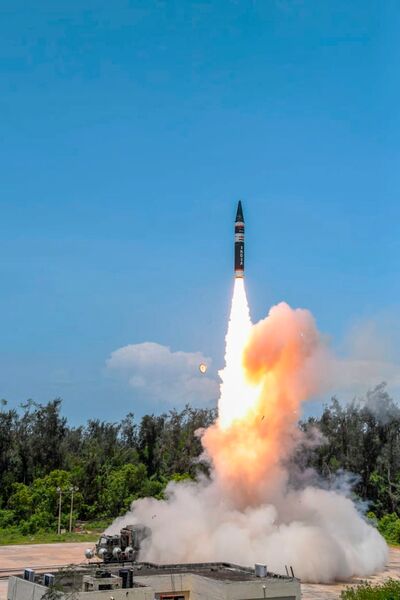
The DRDO and SFC have conducted the flight test of the nuclear-capable Agni Prime missile from Dr Abdul Kalam Island off the coast of Odisha, India. The above picture shows the first test launch of the missile in June 2021. (DRDO via Press Information Bureau)
India's Defence Research and Development Organisation (DRDO) and Strategic Forces Command (SFC) have conducted the flight test of a new-generation ballistic missile known as Agni Prime on 7 June, the Indian Ministry of Defence (MoD) said.
According to a press release by the MoD on 8 June, the test was conducted from Dr APJ Abdul Kalam Island off the northeastern coast of Odisha. The flight test was conducted as part of user trials, the MoD said.
The MoD said the test was the first pre-induction night launch conducted by the users “after three successful developmental trials of the missile, validating the accuracy and reliability of the system”.
The test “has paved the way for induction of the system into the armed forces”, the MoD added.
Vipin Kumar Kaushik, director of the DRDO's Directorate of Public Interface, told Janes there will be more pre-induction tests and then “it will be decided when the induction may take place”.
According to the DRDO, the Agni Prime or Agni P (earlier referred to as Agni-I (P)) is a new-generation advanced variant of the Agni class of missiles. The nuclear-capable Agni P is a two-stage canisterised solid-propellant medium-range ballistic missile (MRBM) with dual redundant navigation and guidance system.
Janes assesses the missile can hit targets at a range between 1,000 and 2,000 km. The Agni P is equipped with upgrades such as improved composite motor casing, a manoeuvrable re-entry vehicle (MaRV), and enhanced propellants, navigation, and guidance systems.
Looking to read the full article?
Gain unlimited access to Janes news and more...







